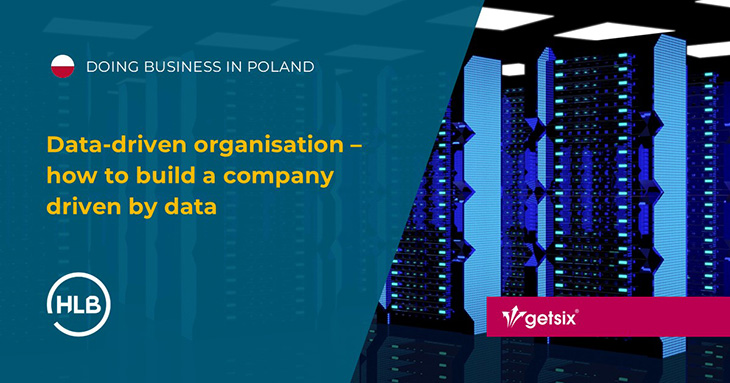Data-driven organisation – how to build a company driven by data
A data-driven organisation is a business that bases its decisions not on intuition, incomplete information or “years of experience”, but on facts and data analysis. In practice, this means that data forms the foundation for planning strategies, managing processes, evaluating performance and creating new products.
In data-driven companies, data is accessible, up-to-date, consistent and—most importantly—used. At every level of management. From everyday operational tasks to key strategic decisions.
Why become a data-driven company?
Companies that effectively use data adapt faster to change, understand customer needs better, and achieve greater operational efficiency.
Key benefits include:
- Better decisions
- Faster response times
- Measurable results
- Greater consistency across the company
Data helps eliminate cognitive biases that influence decision-making. Instead of relying on assumptions, organisations analyse facts.
With access to real-time information, a company can quickly detect problems and capitalise on opportunities—whether in sales, cost management, logistics or customer service.
A data-driven organisation knows what works and what doesn’t. Every decision is linked to a metric, KPI, forecast or scenario.
When everyone has access to the same data and interprets it consistently, it’s easier to align on common goals and collaborate effectively across departments.
The stages of data analytics maturity in a data-driven organisation
Becoming data-driven is a journey. Organisations usually evolve through four stages of analytics maturity:
- Descriptive analytics
- Diagnostic analytics
- Predictive analytics
- Prescriptive analytics
Basic reporting: What happened? – numbers, summaries, tables, charts.
Why did it happen? – root cause analysis, identifying relationships and patterns.
What is likely to happen? – forecasting models for demand, revenue or customer churn.
What should we do? – action recommendations based on algorithms, scenarios and automation.
A mature data-driven organisation uses all these levels, combining them to suit the needs of different departments and users.
Data-driven culture – it’s not just about technology
Even the most advanced tools won’t help if data is ignored, decisions are made “the way they’ve always been made”, and analytics is seen as IT’s responsibility alone.
What does a healthy data culture look like?
- Senior management uses data and communicates its importance.
- Employees understand how and when to apply data in their work.
- Mistakes aren’t punished—they are analysed.
- Analytics doesn’t end with Excel reports—it influences real decisions.
- Teams have easy access to data and analytical tools.
Key elements of a data-driven organisation
- Clear goals and metrics
- What decisions do we want to make based on data?
- Which indicators are most relevant to us?
- Who will take ownership of the metrics?
- Good quality data
- A single source of truth (data warehouse),
- Consistent taxonomies, standards and formats,
- Ongoing cleansing and data quality control (data governance),
- Clear accountability – who is responsible for what data?
- Modern BI tools
- Interdisciplinary teams
Before implementing any systems, ask:
There is no quality analysis without quality data. Key requirements are:
Business Intelligence systems (e.g. Power BI) allow for real-time data visualisation and access – not just for data specialists, but also for managers and operations teams.
This is where it makes sense to take advantage of proven solutions and expert know-how. getsix® Services offers advanced Power BI implementations integrated with financial systems such as Microsoft Dynamics 365 Business Central. Get in touch with us!
Transformation shouldn’t be “just an IT project”. It requires cooperation across analytics, business, finance, marketing and operations.
Common pitfalls in a data-driven transformation
- Lack of leadership – if management doesn’t use data, others won’t either.
- Organisational silos – data is locked in systems or departments.
- Low data trust – inconsistencies between sources lead to scepticism.
- Lack of skills – users don’t know how to use the tools.
- Too big a technological leap – tools are implemented without preparing people and processes.
Implementation scenarios – what can you start doing today?
- Finance: product margin analysis, cost optimisation, quick access to cash flow and profitability indicators.
- Sales and marketing: campaign effectiveness assessment, customer churn prediction, market segmentation.
- HR: analysis of absenteeism and turnover, workforce planning based on historical data.
- Production and logistics: operational efficiency monitoring, failure prediction, inventory control.
How to start building a data-driven organisation?
- Assess your maturity level
- Start with one pilot area
- Create a data responsibility team
- Choose the right tools
- Learn and test
Find out where your organisation stands—are data being used? Do teams trust them?
No need for a revolution—start with a single process, such as sales analysis, budgeting, or profitability.
Define roles (e.g. Data Owner, Data Analyst, CDO), governance structure, communication and decision-making processes.
Select technology that is flexible, scalable, and suitable for your team’s capabilities—BI, data warehouses, integration tools, cloud platforms.
Workshops, tool testing, ongoing training—transformation is a process, not a project. Continuous feedback and learning increase user engagement and success rates.
Summary – data-driven as a competitive edge
Being a data-driven organisation is not a trend—it is a strategic requirement for success in today’s dynamic world. With the power of analytics, companies can:
- Make better decisions,
- Respond more quickly to change,
- Plan and invest more effectively.
Those who commit to the data-driven journey gain not only competitive advantage and transparency, but also resilience in the face of market uncertainty.

The company getsix® Services has been an integral part of the getsix® Group for nearly 20 years, enabling them to provide tested and refined solutions for clients in the service industry who require efficient accounting and financial controlling solutions.
If you have any questions regarding this topic or if you are in need for any additional information – please do not hesitate to contact us:
CUSTOMER RELATIONSHIPS DEPARTMENT

ELŻBIETA NARON
Head of Customer Relationships
Department / Senior Manager
getsix® Group
***





